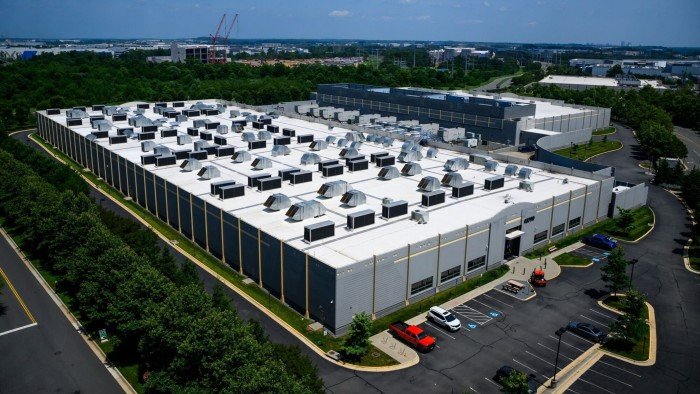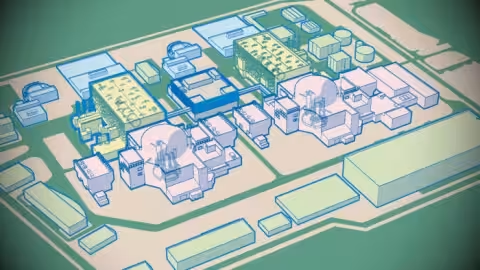US energy companies are pouring record sums into building power plants and transmission lines to meet electricity demand from data centres, raising concerns that the costs may be passed on to consumers.
According to Jefferies investment bank, utility capital expenditure is expected to hit $212.1bn in 2025, a 22.3 per cent rise year-on-year and a 129 per cent increase compared with a decade ago. Investment is forecast to reach a record high in 2027 of $228.1bn.
“Companies are investing in generation and transmission to reindustrialise the economy,” said Julien Dumoulin-Smith, power utilities and clean energy analyst at Jefferies.
“Over the last couple of decades, we’ve seen a relative paucity of new investment . . . we’re now seeing a very meaningful shift, and should see a sharp uptick as data centre deployment accelerates.”

While the growth of data centres could fuel an economic boom, companies, regulators and governments across the country are waking up to the huge capital sums required to build the infrastructure that supports artificial intelligence — while balancing pressure to prevent consumers’ bills from rising.
If data centres pass costs on to households and small businesses, they could face opposition to their expansion plans — while utility companies may have to be more selective with their investments.
“The longest-term risk to the sector that I’m concerned about is affordability. Since the pandemic, we’ve been tracking around 10 per cent year-over-year increases [in consumer energy bills],” said Barclays’ US power and utilities analyst Nicholas Campanella. “There is going to be a point where stakeholders like politicians, consumer advocates and regulators want to step in and deal with that.”
US electricity demand is expected to grow 25 per cent by 2030 and 78 per cent by 2050 from 2023 levels, according to a report by ICF, a consulting group. Residential prices are projected to increase by between 15 per cent and 40 per cent, according to a sample of four utility service areas.
A workaround to providing power for data centres, while sparing taxpayers, is for “hyperscale” developers such as Amazon, Microsoft and Meta to help fund utilities’ investments by paying directly or through special tariffs.
“Whether we have to build them a substation or build an extension for a transmission line, we would charge our data centres directly for that,” said Xcel Energy chief executive Bob Frenzel.

Gustavo Garavaglia, chief financial officer of AES Utilities, said: “Our guiding principle is that customers cannot be harmed by the creation of new data centres. We have clauses in our agreements that protect us, like minimum terms, and they are committed to a certain amount [of energy] every month.”
In March, Dominion Energy — which serves Virginia, home to the highest concentration of data centres in the US — proposed the creation of a rate structure for energy users that demands loads of 25 megawatts or more and a minimum 14-year contract provision for new high-load customers.
Determining how much to build and who pays for investments can be difficult. Since hyperscalers pitch to multiple utilities at a time, demand forecasts are likely to be inflated.
“If they reach out to four or five utilities, they all have to assume they’re going to get the project and then put it into their plan, said Todd Snitchler, president of the Electric Power Supply Association. “But if the objective is to marry supply and demand in a way that doesn’t result in customers being overcharged, we need to have a better handle on this.”
Some data centres are planned to be built next to existing sources of generation, which minimises the amount of required transmission upgrades.
But a problem is that this can lead to the need for new infrastructure elsewhere on the grid, which is harder to account for.
“It’s not always straightforward to tell who is responsible for what,” said Astrid Atkinson, chief executive of Camus, a grid software provider.
“I think in theory, most folks would agree that if you trigger an upgrade, you should probably pay for it. But if you’ve triggered an upgrade that’s happening one or two states away, it’s a more complicated conversation to have.”
However, some industry experts say that low prices in recent years have been responsible for power generation assets being in danger of closure.
“We’ve had the luxury of extraordinarily affordable energy for a long time — a couple of years ago, we were at risk of closing valuable nuclear assets because prices were honestly too low to support their operations,” said Dan Eggers, chief financial officer of Constellation Energy.
“These new customers use electricity all hours of the year. If we can do things to increase the utilisation of the power grid, that’s a benefit, right?”
Investment in electricity assets is not limited to utilities, with private developers investing large sums in generation and transmission.
Invenergy’s 800-mile, $11bn Grain Belt Express transmission line will run through Kansas, Missouri, Illinois and Indiana.
These developers say that since they fund projects by charging utilities, raising debt, equity and government loans, the risk is borne by themselves. However, this can also make capital expenditure harder to justify.
“We have to put together the economic package of how that line is going to be paid for because we don’t have a captive customer base,” said Shashank Sane, who leads Invenergy’s transmission business.























